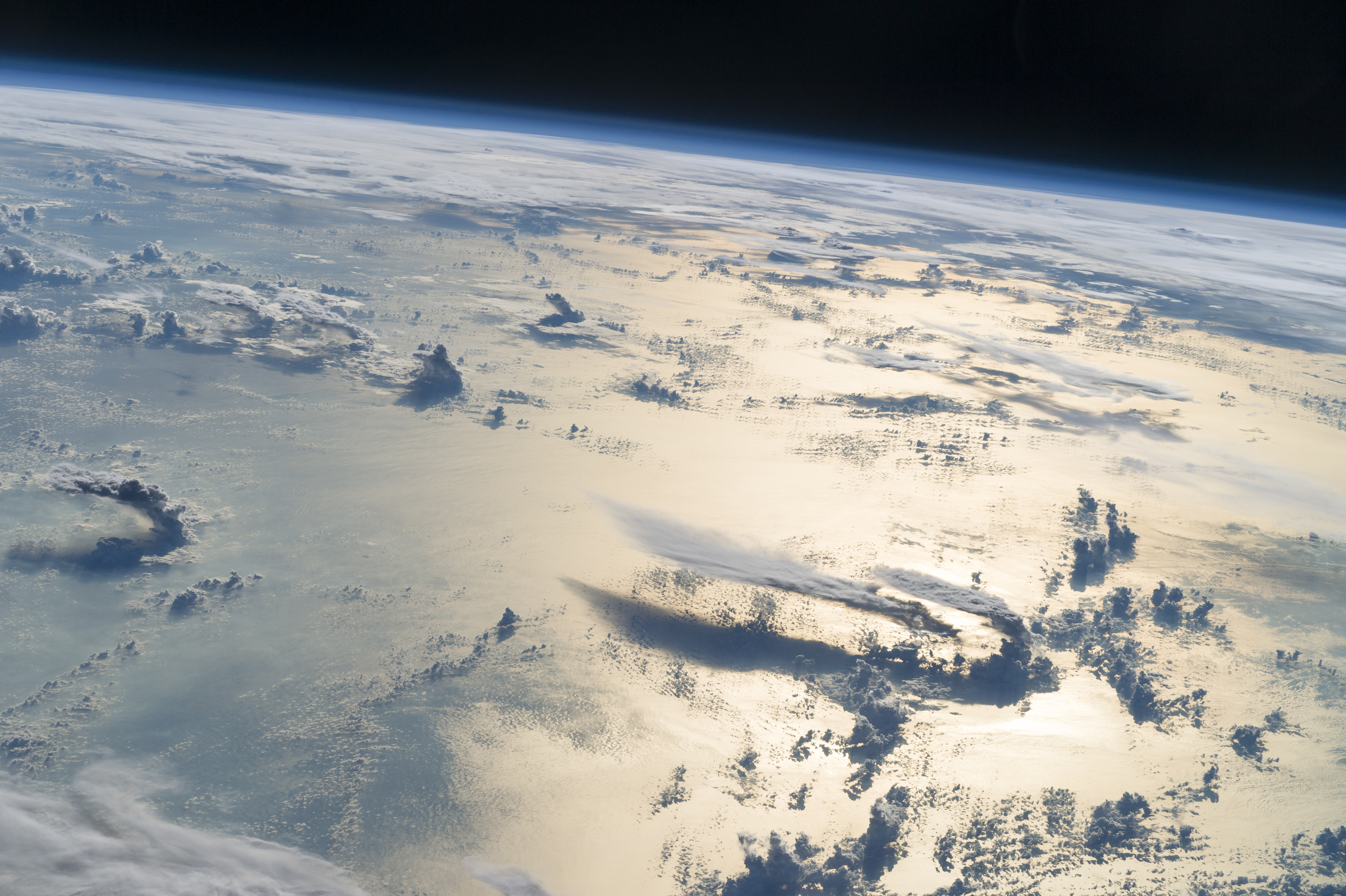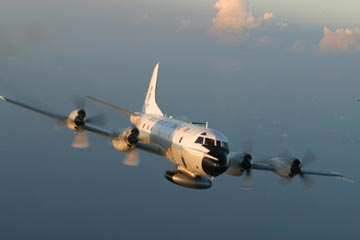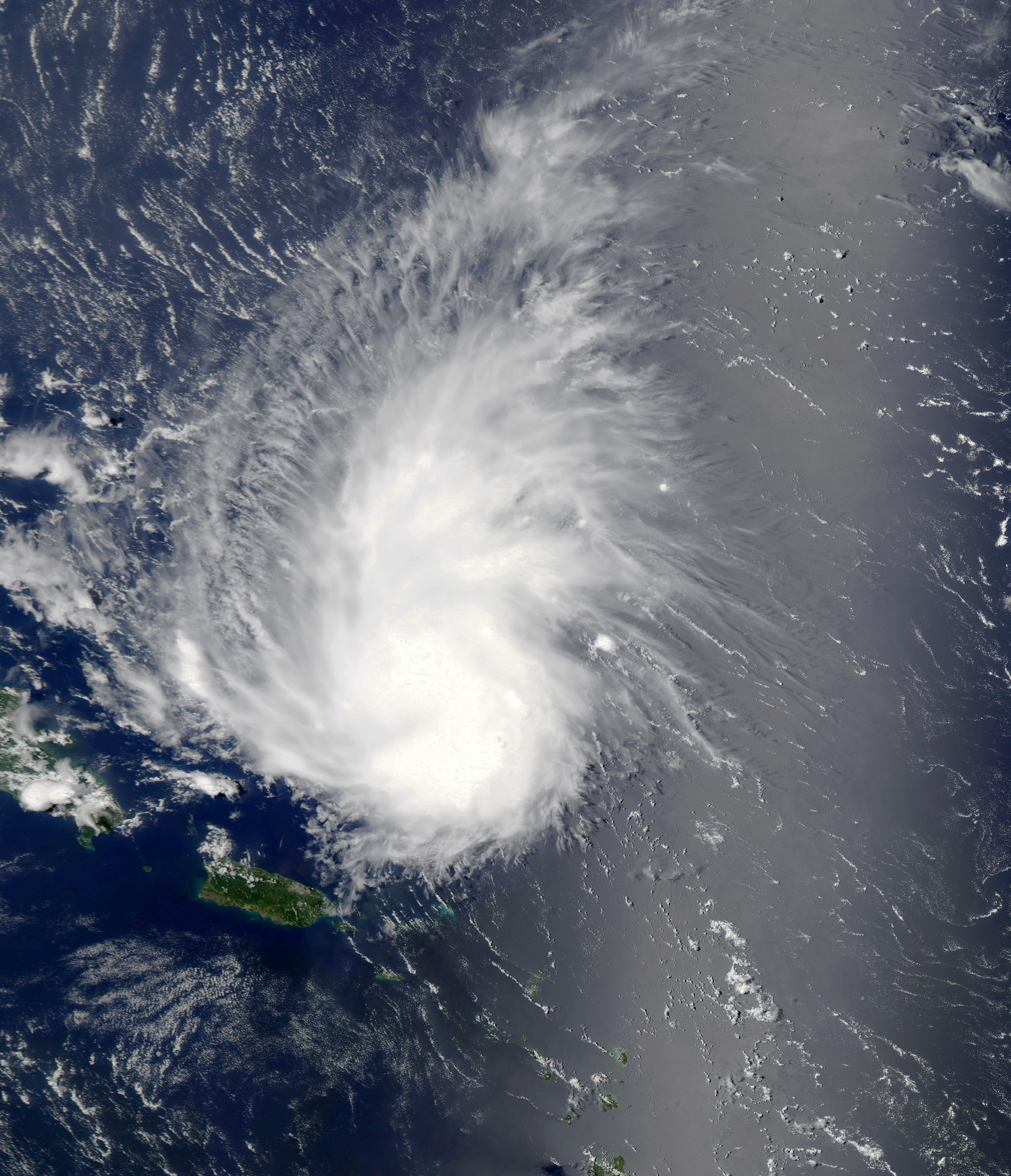|
Typhoon Sally (1964)
Typhoon Sally, known in the Philippines as Typhoon Aring, was a powerful tropical cyclone that brought widespread impacts during its week-long trek across the western Pacific in September 1964. The strongest tropical cyclone of the 1964 Pacific typhoon season and one of the most intense tropical cyclones on record, and among the strongest typhoons ever recorded, with one-minute maximum sustained winds of as estimated by the Joint Typhoon Warning Center. Sally first became a tropical cyclone near the Marshall Islands on September 3, organizing into a tropical depression and then a tropical storm later that day. On September 4, Sally intensified into a typhoon and struck southern Guam the next day. Widespread agricultural damage occurred in the island's southern regions, with the banana crop suffering the costliest losses; the damage toll from crops and property exceeded $115,000. Sally continued to intensify on its west-northwestward trek, and reached its peak stren ... [...More Info...] [...Related Items...] OR: [Wikipedia] [Google] [Baidu] |
Nimbus 1
Nimbus 1 (also called Nimbus-A) was a meteorological satellite. It was the first in a series of the Nimbus program. Launch Nimbus 1 was launched on August 28, 1964, by a Thor-Agena rocket from Vandenberg Air Force Base, California, United States. The spacecraft functioned nominally until September 22, 1964. It re-entered Earth's atmosphere on May 16, 1974. The satellite orbited the Earth once every 1 hour and 38 minutes, at an inclination of 98.6°. Its perigee was and its apogee was . Mission The first in a series of second-generation meteorological research-and-development satellites, Nimbus 1 was designed to serve as a stabilized, Earth-oriented platform for the testing of advanced meteorological sensor systems and for collecting meteorological data. The polar-orbiting spacecraft consisted of three major elements: (1) a torus-shaped sensory ring, (2) solar paddles, and (3) the control system housing. The solar paddles and control system housing were connected t ... [...More Info...] [...Related Items...] OR: [Wikipedia] [Google] [Baidu] |
Philippine Sea
The Philippine Sea is a List of seas#Marginal seas by ocean, marginal sea of the Pacific Ocean, Western Pacific Ocean east of the list of islands of the Philippines, Philippine Archipelago (hence the name) and the List of seas#Largest seas by area, largest sea in the world, occupying an estimated surface area of . The Philippine Sea Plate forms the floor of the sea. Its western border is the first island chain to the west, comprising the Ryukyu Islands in the northwest and Taiwan in the west. Its southwestern border comprises the Philippines, Philippine islands of Luzon, Catanduanes, Samar, Leyte, and Mindanao. Its northern border comprises the Japanese islands of Honshu, Shikoku and Kyūshū. Its eastern border is the second island chain to the east, comprising the Bonin Islands and Iwo Jima in the northeast, the Mariana Islands (including Guam, Saipan, and Tinian) in the due east, and Halmahera, Palau, Yap and Ulithi (of the Caroline Islands) in the southeast. Its southern ... [...More Info...] [...Related Items...] OR: [Wikipedia] [Google] [Baidu] |
Barometric Pressure
Atmospheric pressure, also known as air pressure or barometric pressure (after the barometer), is the pressure within the atmosphere of Earth. The standard atmosphere (symbol: atm) is a unit of pressure defined as , which is equivalent to 1,013.25 millibars, 760 mm Hg, 29.9212 inchesHg, or 14.696 psi.International Civil Aviation Organization. ''Manual of the ICAO Standard Atmosphere'', Doc 7488-CD, Third Edition, 1993. . The atm unit is roughly equivalent to the mean sea-level atmospheric pressure on Earth; that is, the Earth's atmospheric pressure at sea level is approximately 1 atm. In most circumstances, atmospheric pressure is closely approximated by the hydrostatic pressure caused by the weight of air above the measurement point. As elevation increases, there is less overlying atmospheric mass, so atmospheric pressure decreases with increasing elevation. Because the atmosphere is thin relative to the Earth's radius—especially the dense atmospheric layer at low altitudes ... [...More Info...] [...Related Items...] OR: [Wikipedia] [Google] [Baidu] |
Japan Meteorological Agency
The Japan Meteorological Agency (JMA; ''気象庁, Kishō-chō'') is a division of the Ministry of Land, Infrastructure, Transport and Tourism dedicated to the Scientific, scientific observation and research of natural phenomena. Headquartered in Minato, Tokyo the government agency, agency collects data on meteorology, hydrology, seismology, volcanology, and other related fields. The JMA is responsible for collecting and disseminating weather data and Forecasting, forecasts to the public, as well as providing specialized information for aviation and Marine weather forecasting, marine sectors. Additionally, the JMA issues warnings for volcanic eruptions and is integral to the nationwide Earthquake Early Warning (Japan), Earthquake Early Warning (EEW) system. As one of the Regional Specialized Meteorological Centers designated by the World Meteorological Organization (WMO), the JMA also Forecasting, forecasts, Tropical cyclone naming, names, and distributes warnings for tropical ... [...More Info...] [...Related Items...] OR: [Wikipedia] [Google] [Baidu] |
Maximum Sustained Wind
The maximum sustained wind associated with a tropical cyclone is a common indicator of the intensity of the storm. Within a mature tropical cyclone, it is found within the eyewall at a certain distance from the center, known as the radius of maximum wind, or RMW. Unlike gusts, the value of these winds are determined via their sampling and averaging the sampled results over a period of time. Wind measuring has been standardized globally to reflect the winds at above mean sea level, and the maximum sustained wind represents the highest average wind over either a one-minute (US) or ten-minute time span (see the definition, below), anywhere within the tropical cyclone. Surface winds are highly variable due to friction between the atmosphere and the Earth's surface, as well as near hills and mountains over land. Over the ocean, satellite imagery is often used to estimate the maximum sustained winds within a tropical cyclone. Land, ship, aircraft reconnaissance observations, an ... [...More Info...] [...Related Items...] OR: [Wikipedia] [Google] [Baidu] |
Chuuk State
Chuuk State (; also known as Truk) is one of the four states of the Federated States of Micronesia (FSM). It consists of several island groups: Nomoneas, Faichuk, Faichuuk, the Hall Islands, Namonuito Atoll (Magur Islands), Pattiw (Western Islands), and the Nomoi Islands, Mortlock Islands. Chuuk is by far the FSM's most populous state, with 50,000 inhabitants on . Chuuk Lagoon is where most people live. Weno island, in the lagoon, is Chuuk's state capital and the country's biggest city. It may Proposed Chuukese independence referendum, hold a referendum on independence in the near future, although this referendum has been repeatedly postponed. History Indigenous settlement Chuuk was first settled by Austronesian peoples, Austronesians, believed to be from the Lapita culture of Island Melanesia. Archaeological evidence indicates that islands of Fefan, Feefen and Wééné Islands had human settlements in the second and first century BCE. Later evidence indicates that widespread ... [...More Info...] [...Related Items...] OR: [Wikipedia] [Google] [Baidu] |
Hurricane Hunters
Hurricane hunters, typhoon hunters, or cyclone hunters are aircrews that fly into tropical cyclones to gather weather data. In the United States, the organizations that fly these missions are the United States Air Force Reserve's 53rd Weather Reconnaissance Squadron and the National Oceanic and Atmospheric Administration's Hurricane Hunters. Such missions have also been flown by Navy units and other Air Force and NOAA units. Other organizations also fly these missions, such as Government Flying Service Hong Kong. The first crewed flight into a hurricane happened in 1943 when a pilot-trainer flew into a Category 1 hurricane near Galveston, Texas on a bet. In the past, before satellites were used to find tropical storms, military aircraft flew routine weather reconnaissance tracks to detect formation of tropical cyclones. While modern satellites have improved the ability of meteorologists to detect cyclones before they form, only aircraft are able to measure the interior ba ... [...More Info...] [...Related Items...] OR: [Wikipedia] [Google] [Baidu] |
Eniwetok Atoll
Enewetak Atoll (; also spelled Eniwetok Atoll or sometimes Eniewetok; , , or , ; known to the Japanese as Brown Atoll or Brown Island; ) is a large coral atoll of 40 islands in the Pacific Ocean and with its 296 people (as of 2021) forms a legislative district of the Ralik Chain of the Marshall Islands. With a land area total less than , it is no higher than and surrounds a deep central lagoon, in circumference. It is the second-westernmost atoll of the Ralik Chain and is west from Bikini Atoll. It was held by the Japanese from 1914 until its capture by the United States in February 1944 during World War II, then became Naval Base Eniwetok. Nuclear testing by the US, totaling the equivalent of over 30 megatons of TNT, took place during the Cold War; in 1977–1980, a concrete dome (the Runit Dome) was built on Runit Island to deposit radioactive soil and debris. The Runit Dome is deteriorating and could be breached by a typhoon, though the sediments in the lagoon are ... [...More Info...] [...Related Items...] OR: [Wikipedia] [Google] [Baidu] |
Tropical Wave
A tropical wave (also called easterly wave, tropical easterly wave, and African easterly wave), in and around the Atlantic Ocean, is a type of atmospheric trough, an elongated area of relatively low air pressure, oriented north to south, which moves from east to west across the tropics, causing areas of cloudiness and thunderstorms. Tropical waves form in the easterly flow along the equatorial side of the subtropical ridge or belt of high air pressure which lies north and south of the Intertropical Convergence Zone (ITCZ). Tropical waves are generally carried westward by the prevailing easterly winds along the tropics and subtropics near the equator. They can lead to the formation of tropical cyclones in the north Atlantic and northeastern Pacific basins. A tropical wave study is aided by Hovmöller diagrams, a graph of meteorological data. West-moving waves can also form from the tail end of frontal zones in the subtropics and tropics, and may be referred to as easterly ... [...More Info...] [...Related Items...] OR: [Wikipedia] [Google] [Baidu] |
Trough (meteorology)
A trough is an elongated region of relatively low atmospheric pressure without a closed Isobar (meteorology), isobaric contour that would define it as a Low-pressure area, low pressure area. Since low pressure implies a low Geopotential height, height on a pressure surface, Valley, troughs and Ridge (meteorology), ridges refer to features in an identical sense as those on a topographic map. Troughs may be at the surface, or aloft, at altitude. Near-surface troughs sometimes mark a weather front associated with clouds, showers, and a wind direction shift. Upper-level troughs in the jet stream (as shown in diagram) reflect Cyclonic rotation, cyclonic filaments of vorticity. Their motion induces upper-level wind divergence, lifting and cooling the air ahead (downstream) of the trough and helping to produce cloudy and rain conditions there. Unlike fronts, there is not a universal symbol for a trough on a surface weather analysis chart. The weather charts in some countries or regions ... [...More Info...] [...Related Items...] OR: [Wikipedia] [Google] [Baidu] |
Seoul
Seoul, officially Seoul Special Metropolitan City, is the capital city, capital and largest city of South Korea. The broader Seoul Metropolitan Area, encompassing Seoul, Gyeonggi Province and Incheon, emerged as the world's List of cities by GDP, sixth largest metropolitan economy in 2022, trailing behind New York metropolitan area, New York, Greater Tokyo Area, Tokyo, Greater Los Angeles, Los Angeles, Paris metropolitan area, Paris, and London metropolitan area, London, and hosts more than half of South Korea's population. Although Seoul's population peaked at over 10 million, it has gradually decreased since 2014, standing at about 9.6 million residents as of 2024. Seoul is the seat of the Government of South Korea, South Korean government. Seoul's history traces back to 18 BC when it was founded by the people of Baekje, one of the Three Kingdoms of Korea. During the Joseon dynasty, Seoul was officially designated as the capital, surrounded by the Fortress Wall of Seoul. I ... [...More Info...] [...Related Items...] OR: [Wikipedia] [Google] [Baidu] |
Typhoon Ruby (1964)
Typhoon Ruby, known in the Philippines as Typhoon Yoning, was a strong tropical cyclone that struck Hong Kong, Macau, and southern China in early September 1964. The precursor disturbance to Ruby was first identified on August 29 over the Philippine Sea, and this system organised into a tropical cyclone by September 1. Ruby intensified as it moved west, becoming a typhoon the next day and subsequently passing over the Babuyan Islands of the Philippines. After reaching the South China Sea, Ruby turned northwest and intensified further, attaining peak ten-minute sustained winds of before making landfall at the peak intensity near Hong Kong on September 5. The typhoon weakened after moving inland and dissipated on September 6 over southeastern China. Despite brushing Philippines as a typhoon, no impacts were recorded. Ruby was one of the strongest typhoons to hit Hong Kong in the city's history. The storm produced a peak wind gust of at Tate's Cairn and ... [...More Info...] [...Related Items...] OR: [Wikipedia] [Google] [Baidu] |









